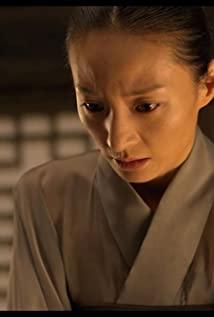The beginning of the villain is a 5-minute long beheading of a hundred people in the corridor. The cramped scene, overflowing blood, dark tones, and continuous first-person perspective, can not help but remind people of Park Zanyu's old boy. Classic hallway mirror.
It can be seen that director Zheng Bingji loves long takes very much. In just 15 minutes after the film starts, there are three sections and one take to the end. The director firmly grasps the audience's attention through the technique of long mirror, so that the audience has been in a high concentration. state, as if holding his breath for fear of missing an important picture.
Subsequently, the transformation of the film from a subjective perspective to an objective perspective is also very clever. The heroine Shuxi slammed into the glass after suffering a heavy blow, and Shuxi's figure appeared on the screen for the first time, thus completing the transformation.
The third long shot of the villain comes in a scene where Sook Hee runs away after the organization wakes up. From the prison cell, the dance studio to the back kitchen, Zheng Bingji's internal organization is like a microcosm of a small world. Shuxi panicked and misbelieved the lie until she finally failed to escape. After showing enough violent aesthetics incisively and vividly, the story unfolds.
However, after such a shocking and powerful opening, the following plots began to fall into the clichés. Anyone who has seen Korean crime movies is no stranger to the arrangement of villainous women. South Korea has always made wonderful women's revenge movies, not limited to In terms of form, it focuses on portraying the heart of the characters. But the villain perfectly interprets the high opening and low walking. Especially the core word of this film - evil, if you say that the evil girl is only very capable of fighting and actual combat, she only highlights the so-called evil through the outside, and the evil of her behavior is not supported by the evil of the heart, which is too much. Superficial, eventually causing the characters to float on the surface, pale and weak, and not deep enough.
Although basically all imaginable tragedies happened to the heroine, her father died tragically, was sold to a brothel as a child prostitute, her husband died in revenge for her, and then was forcibly trained by the organization as a killing machine, the object of a new love - Hyun-soo Concealing identities, subverting past experiences, living in deception all the time.
If the death of the father and husband is a necessary element of the heroine's tragic past, the small and fresh emotional scenes like the Korean drama inserted in the middle seem inexplicably inconsistent. As the audience expected, Hyun-soo would be implicated and die by her. However, the scene of Hyun-soo's death was not handled well. Hyun-soo fell from the building to protect Shu-hee's child, but the emotional foothold of this scene Because of Sook Hee's feelings for the child, Hyun Soo's sacrifice became pointless and weightless.
It is undeniable that the beginning and end of the villain are very exciting, but the exciting beginning and end are all derived from the innovation of fighting techniques, and depend on the rich and exciting action scenes. This exquisite design has nothing to do with the whole plot of the movie, so this is The brilliance highlights the mediocrity of the story, and the lackluster mid-section. Sook-hee's past tragedies are all shown through interludes, and as a result, sudden, untimely flashbacks also create confusion in the film's structure.
The amazing 15 minutes eventually lost to the dullness of the next 100 minutes. The villain is like a bulging balloon, without the accumulation of the story, it flies away and hastily.
View more about The Villainess reviews











